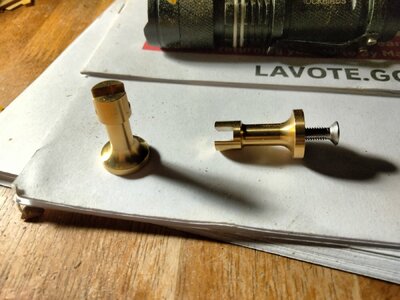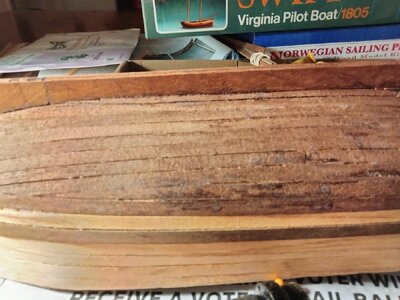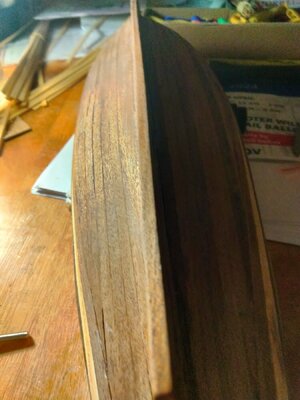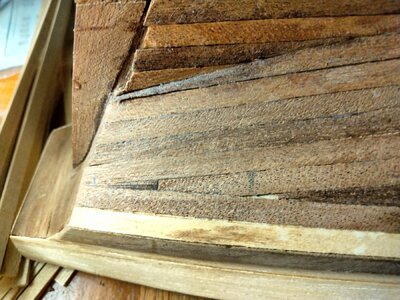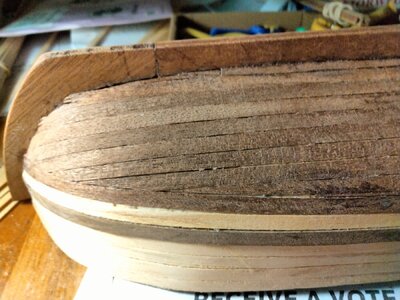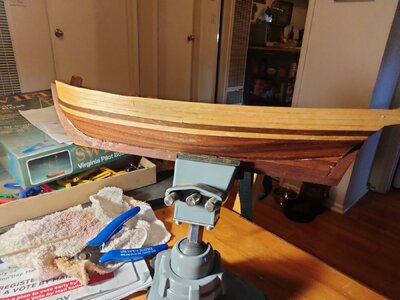- Joined
- Oct 1, 2023
- Messages
- 427
- Points
- 168

Here is the start of my build log. This is my third project following the Model Shipways Dory and Pram.
From the attached photos you will find the problem of the day.
I completed the second planking and started sanding. Let me state, I have never sanded with so much care. The walnut planking varies between .3 and .5mm thick.
As previously posted, this is a 42 year old kit. The plywood keel was warped and twisted after installing the frames. When I applied heat and moisture to straighten the plywood delaminated. I glued it back together but didn't really get much improvement. I dealt with the twisted frame by installing the deck one frame at a time and shiming the low spots. Same goes for the lower hull. I used model lite filler and varnished after sanding. I used TiteBond original to install the second plank layer. The glue would bleed through the thinner planks. I had a problem with adhesion, in general, due to the filler I used. When I started sanding the plank edges and ends tore out, frequently. I used CA to get the tearouts back in place.
Now I'm fighting the hard spots from CA saturation along with the discoloration.
I realize that any staining and finish will telegraph this glossiness. I have considered not staining and a high gloss finish or saturated the planks with CA and then use a satin finish.
Are either of these ideas workable. I'm certainly open to suggestions.
In closing, I'm having a lot of fun and learning a lot.
Ted Robinson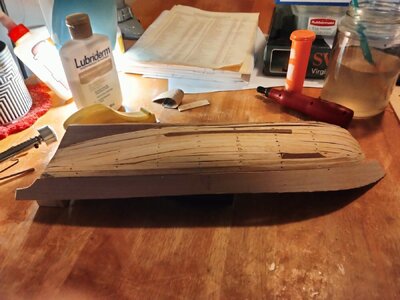
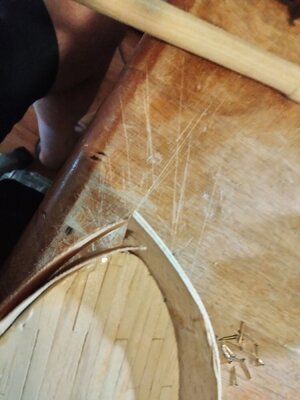
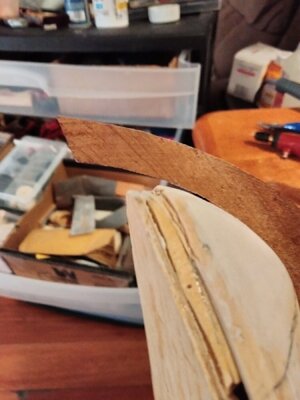
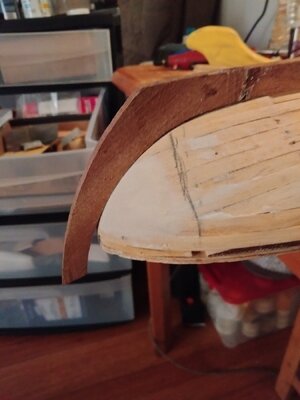
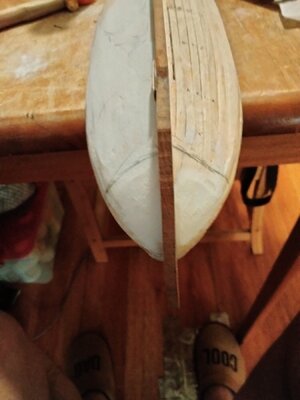

From the attached photos you will find the problem of the day.
I completed the second planking and started sanding. Let me state, I have never sanded with so much care. The walnut planking varies between .3 and .5mm thick.
As previously posted, this is a 42 year old kit. The plywood keel was warped and twisted after installing the frames. When I applied heat and moisture to straighten the plywood delaminated. I glued it back together but didn't really get much improvement. I dealt with the twisted frame by installing the deck one frame at a time and shiming the low spots. Same goes for the lower hull. I used model lite filler and varnished after sanding. I used TiteBond original to install the second plank layer. The glue would bleed through the thinner planks. I had a problem with adhesion, in general, due to the filler I used. When I started sanding the plank edges and ends tore out, frequently. I used CA to get the tearouts back in place.
Now I'm fighting the hard spots from CA saturation along with the discoloration.
I realize that any staining and finish will telegraph this glossiness. I have considered not staining and a high gloss finish or saturated the planks with CA and then use a satin finish.
Are either of these ideas workable. I'm certainly open to suggestions.
In closing, I'm having a lot of fun and learning a lot.
Ted Robinson









